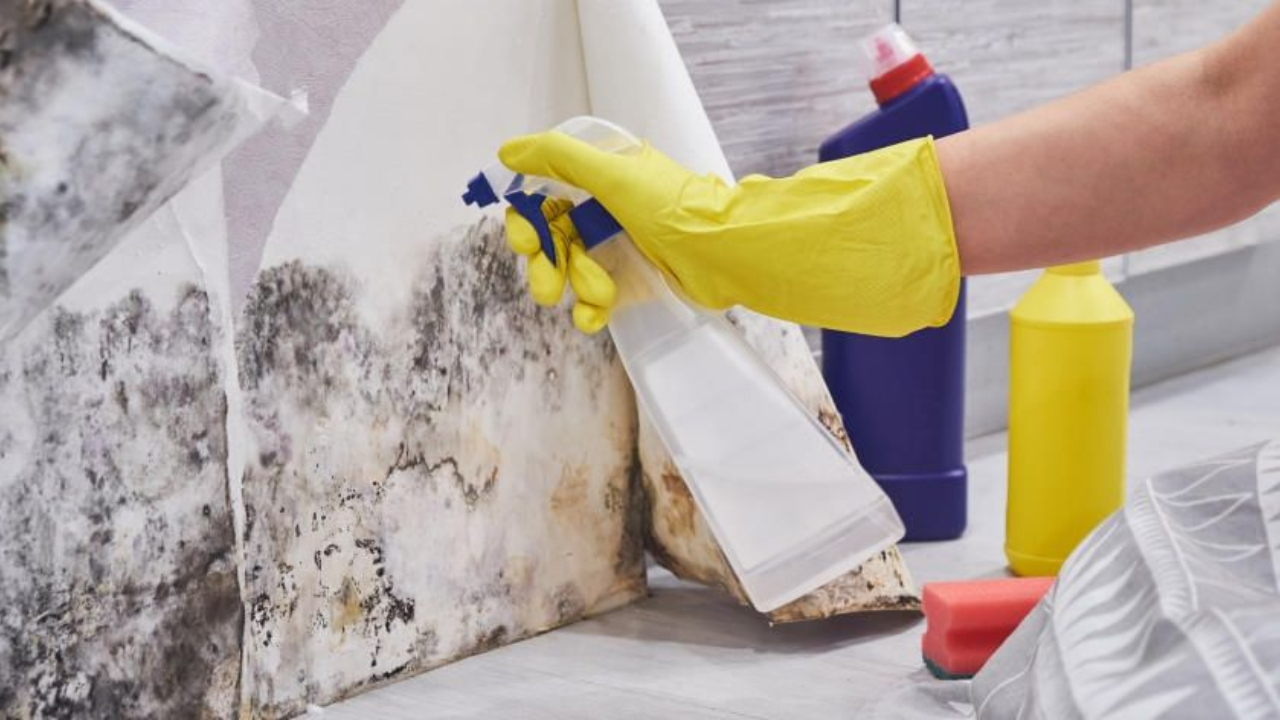When is it safe for homeowners to clean mold and when should they call a professional? (And can I use bleach?)
Mar 26, 2025
Bleach Isn’t Always the Answer (Even if Your Uncle Swears By It)
"Just splash some bleach on it!" — Sound familiar?
For decades, bleach has been the go-to household solution for all things gross, slimy, or suspiciously black on the wall. But when it comes to mold removal, the truth is more complicated. While bleach might appear to “kill” mold on the surface, it doesn’t always solve the problem, and in some cases, it can make it worse.
At ZeroMold, we take mold seriously because we know it affects your home, your health, and your peace of mind. Let's break down when bleach is safe, when DIY mold cleanup is okay, and when it’s time to pick up the phone and call a professional mold remediation team.
Should You Use Bleach for Mold Cleanup?
Short Answer: Usually No.
Why?
-
Bleach doesn’t penetrate porous materials. It only treats surface mold on non-porous materials like tile or glass. If mold is in drywall, wood, carpet, or grout? Bleach can't reach it.
-
Dead mold is still harmful. Even after killing mold, bleach leaves behind spores and toxins that can continue to affect your air quality.
-
Bleach is a harsh chemical. It can irritate the lungs, eyes, and skin, especially in poorly ventilated spaces. And let’s not even talk about what happens when bleach mixes with ammonia (hint: it’s toxic).
When Bleach May Be Appropriate
-
Small patches of mold on non-porous surfaces
-
Temporary disinfection of bathroom tiles or bathtubs
-
Only when paired with proper ventilation and PPE
Safer DIY Alternatives to Bleach
-
Distilled white vinegar (kills 80%+ of mold species)
-
3% Hydrogen peroxide (antifungal and antibacterial)
-
Baking soda and water (gentle and safe on most surfaces)
-
Dish soap + water (for removing surface mold)
When Is It Safe to Clean Mold Yourself?
You Can Consider DIY Mold Removal If:
-
The area is under 10 square feet (about a 3ft x 3ft patch)
-
The mold is on a non-porous surface (tile, sealed countertops, glass)
-
The mold was not caused by contaminated water (sewage or flood)
-
You’re healthy and not immunocompromised, and no one in your home has asthma or severe allergies
Essential DIY Mold Cleanup Steps:
-
Fix the moisture source first (leak, condensation, poor ventilation)
-
Wear protective gear: N95 respirator, gloves, goggles
-
Clean using soap and water or vinegar-based solutions
-
Dry the area completely to prevent regrowth
-
Discard any mold-infested porous materials (like drywall, carpet, ceiling tiles)
-
Ventilate well throughout the process
Bonus tip: If it still smells musty after you clean, mold is probably still hiding somewhere.
When Should You Call a Mold Remediation Professional?
Don’t go it alone if:
-
The mold covers more than 10 square feet
-
Mold is growing inside walls, HVAC systems, or insulation
-
You smell mold but can’t see it (indicating hidden growth)
-
Anyone in your home has chronic health issues, asthma, or allergies
-
The mold is caused by flooding or sewage backup
-
You’ve tried to clean it, but it keeps coming back
At ZeroMold, we have remediation tools that go beyond a sponge and spray bottle:
-
HEPA vacuums
-
Infrared moisture detectors
-
Organic fog treatments that reach into porous materials
-
Containment systems to stop spores from spreading
And let’s be honest: peace of mind comes easier when you know it’s done right the first time.
Why DIY Isn’t Always Cheaper
While tackling small mold jobs yourself can save money short-term, improper cleanup often leads to bigger problems, and bills, down the road:
-
Recurring mold growth
-
Damage to drywall, insulation, or flooring
-
Health-related costs from exposure
At ZeroMold, we see it all the time: homeowners try to fix it themselves, then call us when it spreads. Mold removal is about more than wiping, it’s about eliminating the cause and preventing future growth.
The Bottom Line: Clean Smart, Not Just Hard
Bleach might have its place in your cleaning cabinet, but it’s no silver bullet for mold. Effective mold removal starts with moisture control, uses safe cleaning methods, and, when needed, calls in the pros.
💬 Need a mold inspection? We offer free assessments and eco-friendly mold remediation solutions.
📞 Contact ZeroMold today, and let’s get your home mold-free—for good!
Schedule Your FREE Inspection
Our friendly and knowledgeable staff members are ready to answer your questions and help you get started with the process of eliminating mold in your home or business.
ZeroMold will do a FREE thorough mold inspection and give you helpful tips and recommendations.
Call Now (888) 928-MOLD
